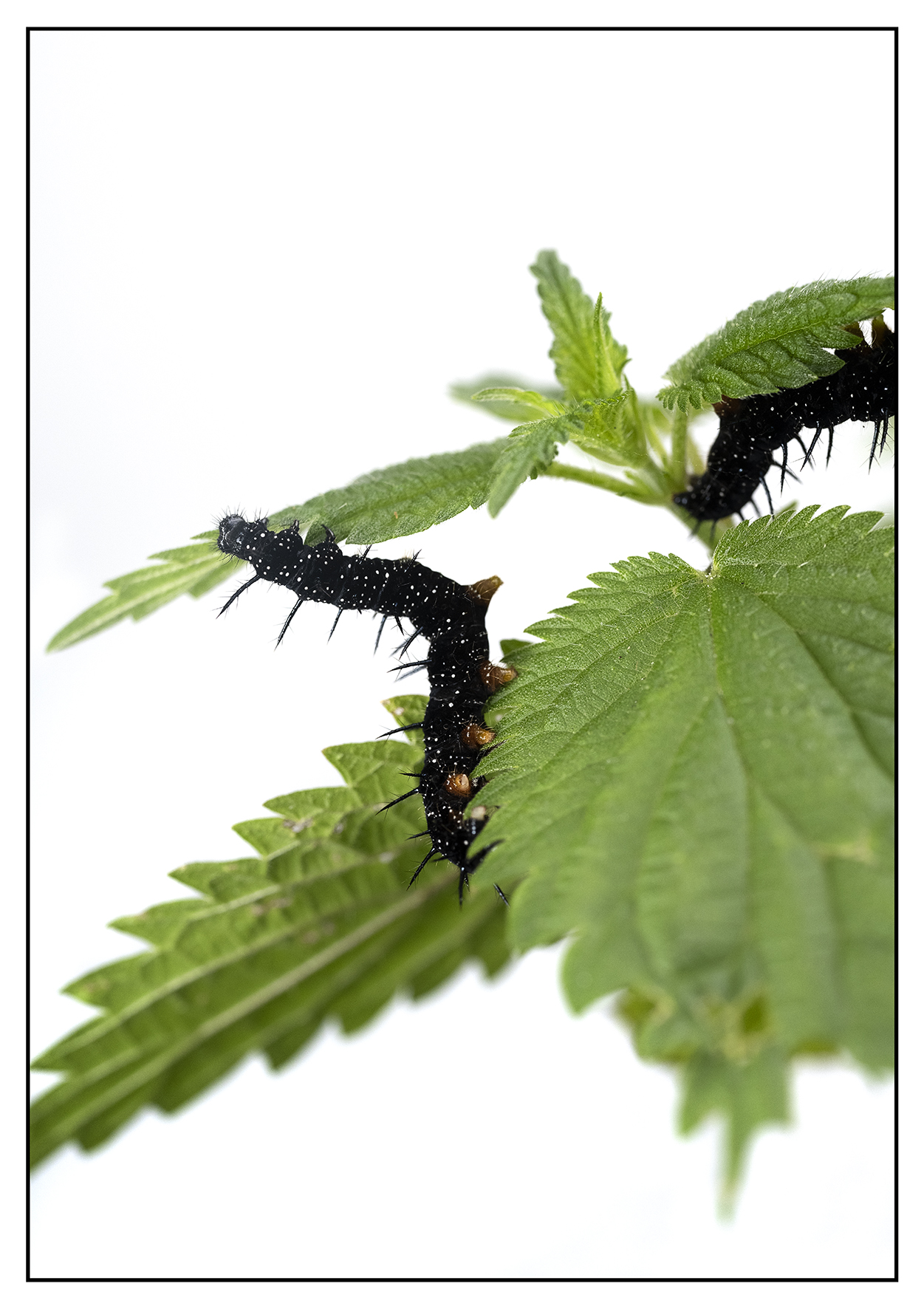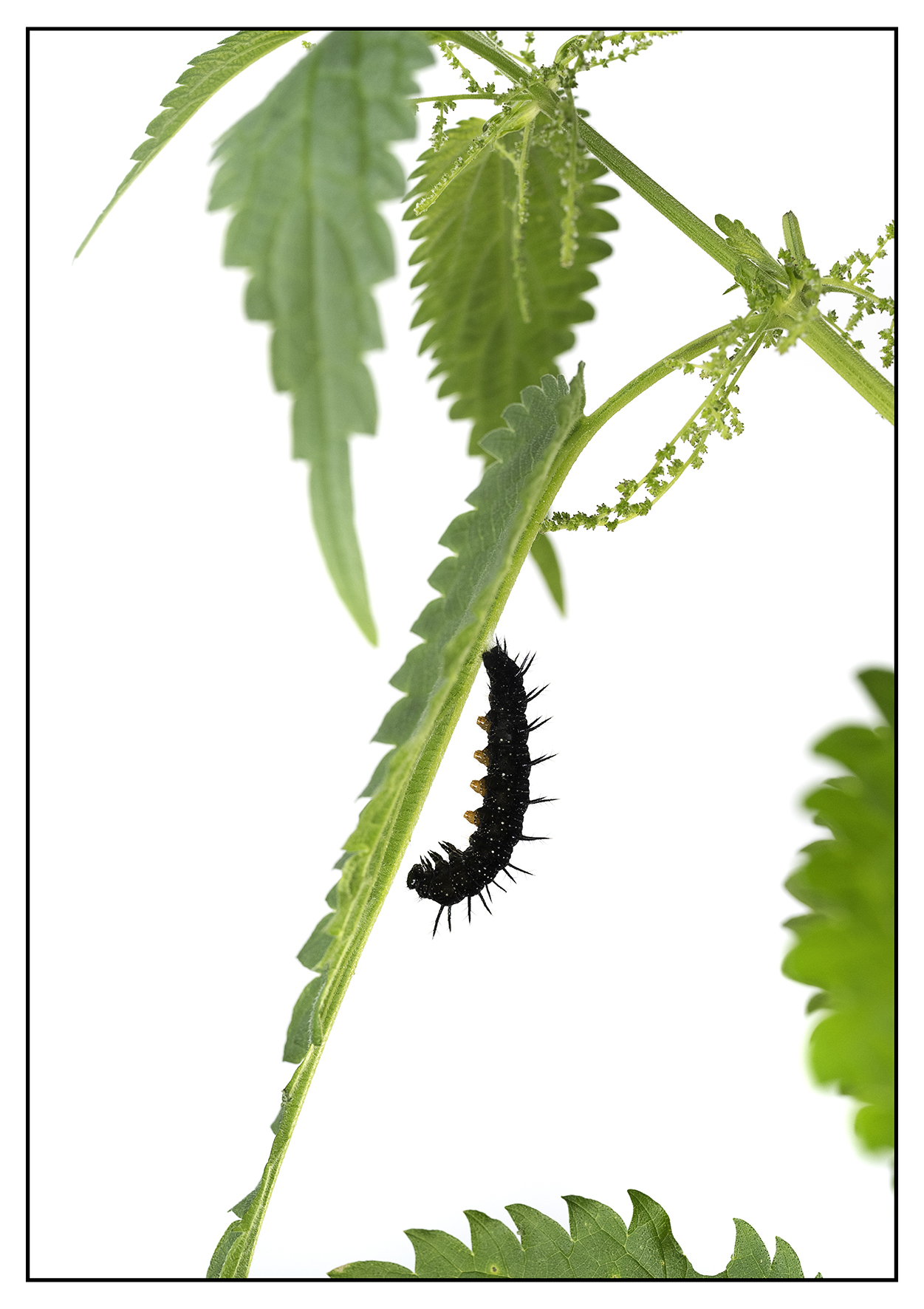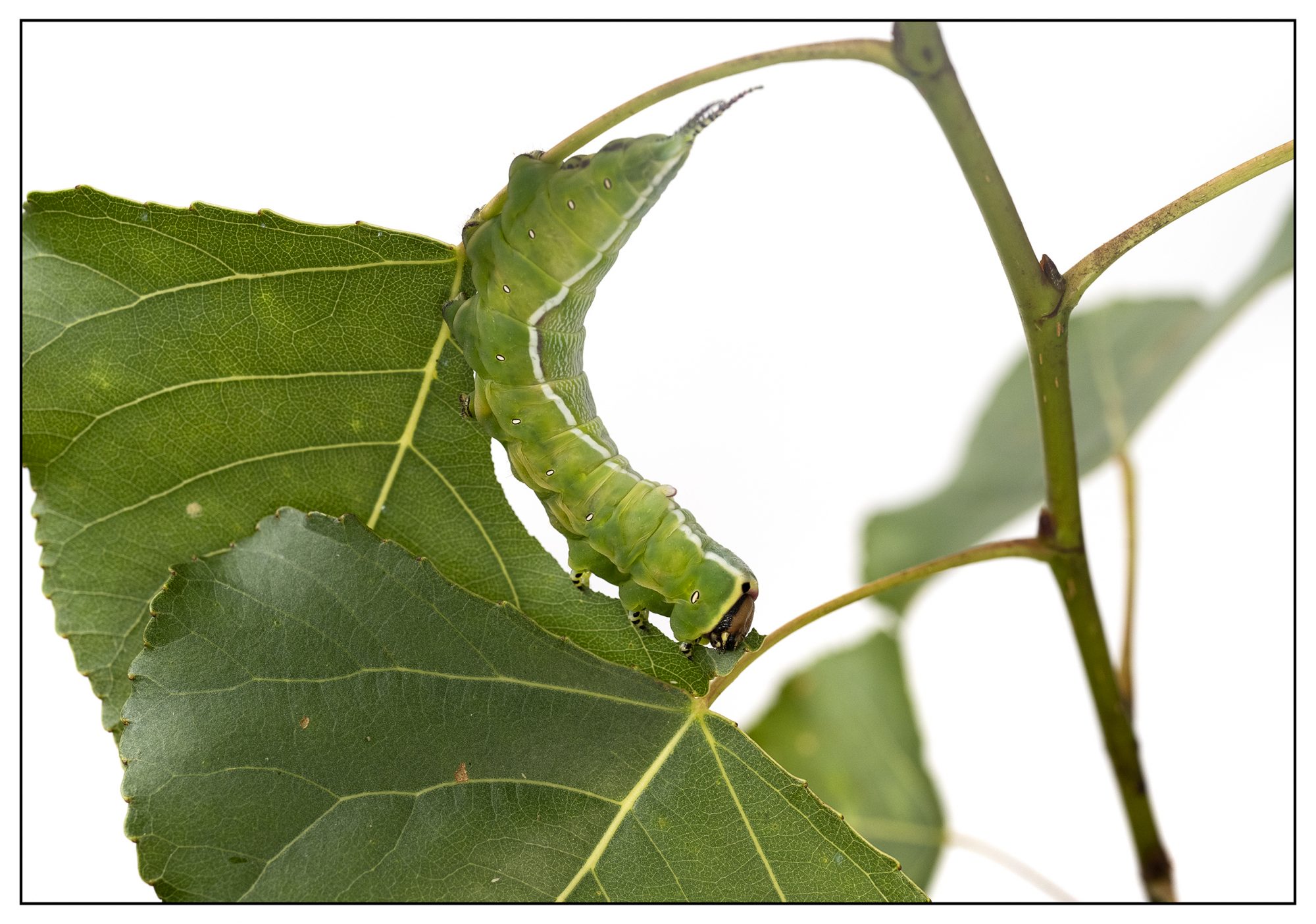
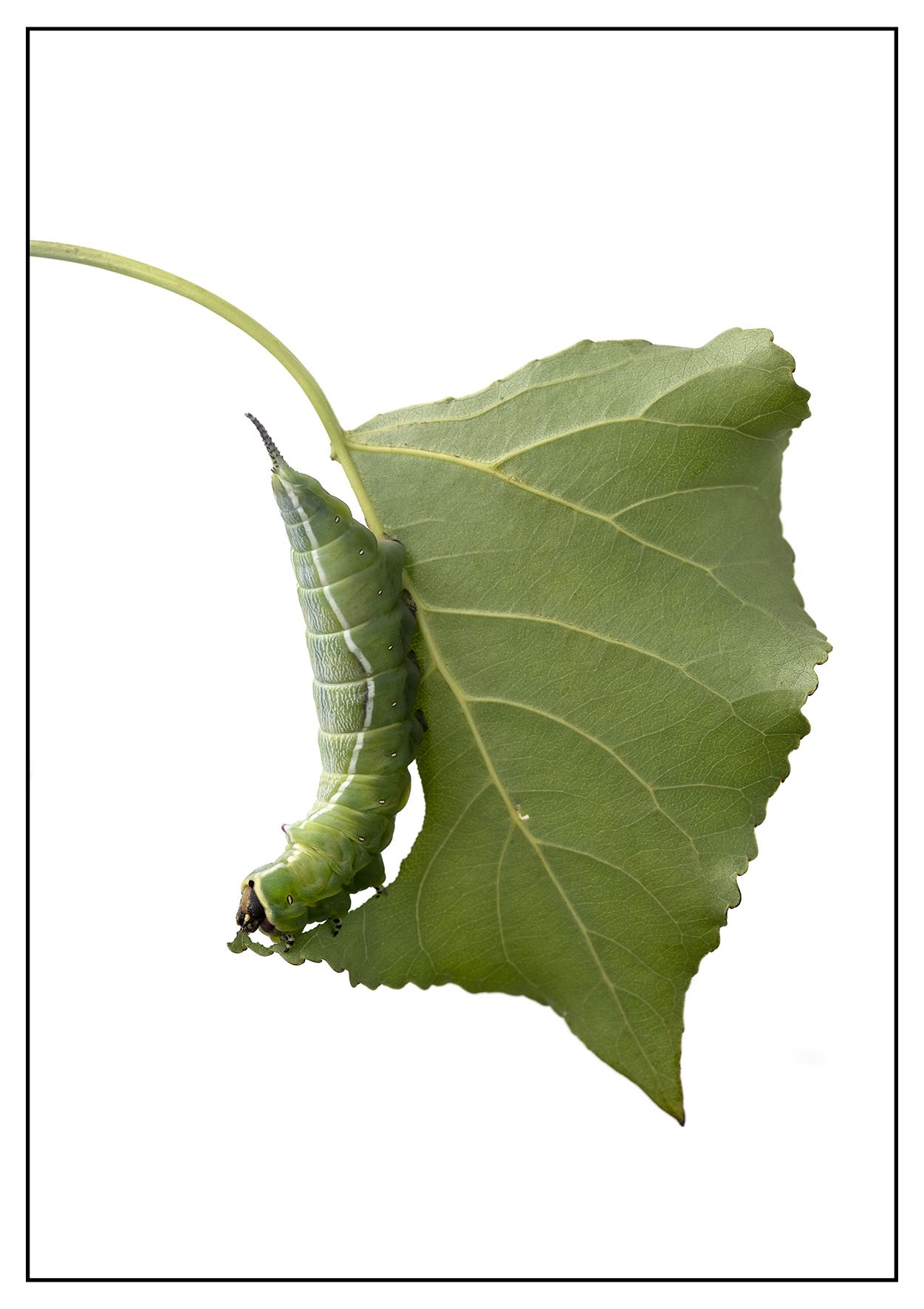
Puss moth (Cerura vinula) on Populus
During the pupation process of several butterflies, the caterpillar hangs herself upside down from a plant, curling her head and front legs together. After hanging like this for a day, the caterpillar’s skin tears open and is sheared off through a series of contractions; the pupa appears. I anxiously waited for this moment to begin. And when it did, it still came unexpectedly and with enormous intensity. Watching pupations is literally breathtaking, only to breathe a sigh of relief after each successful pupation.
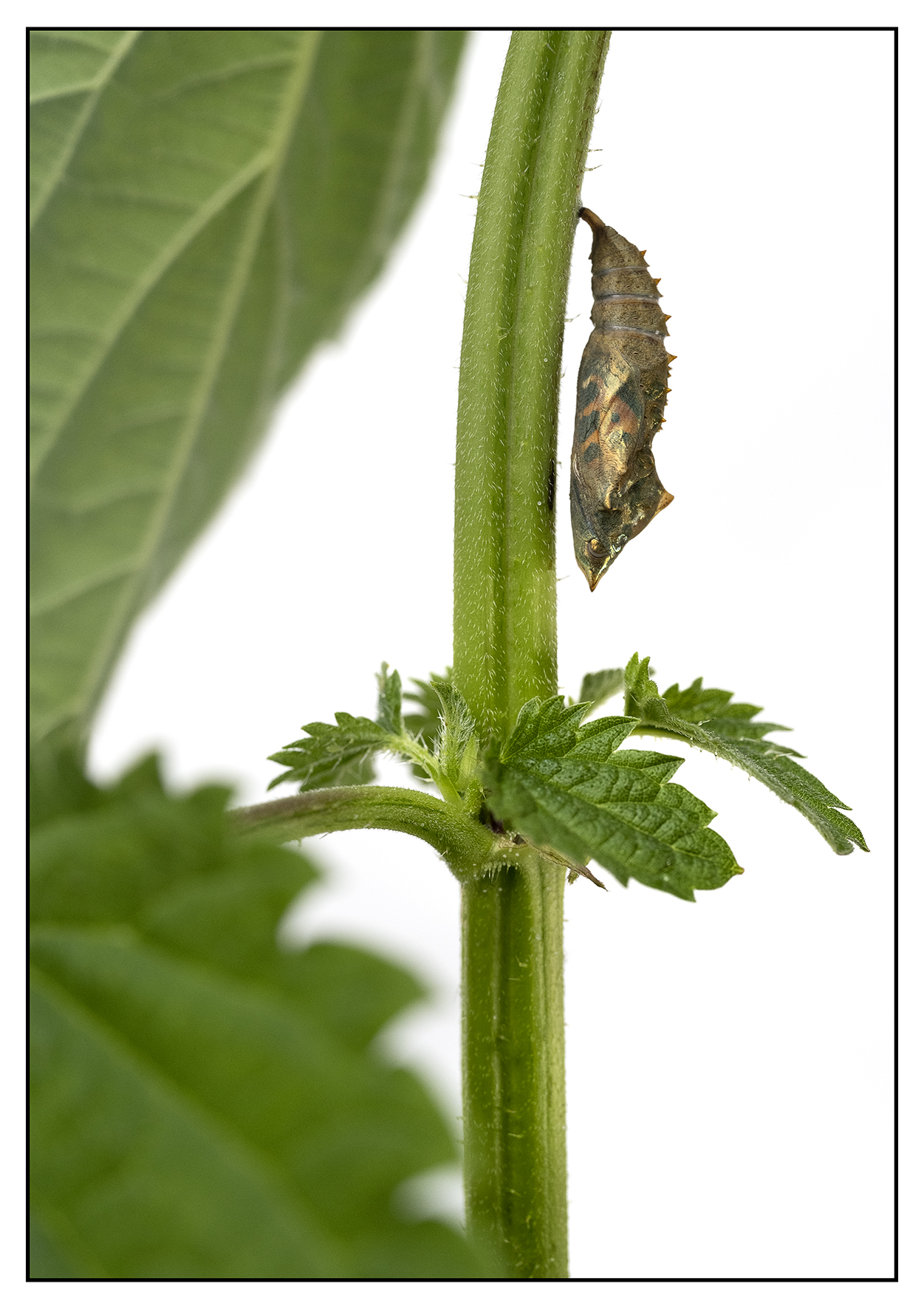
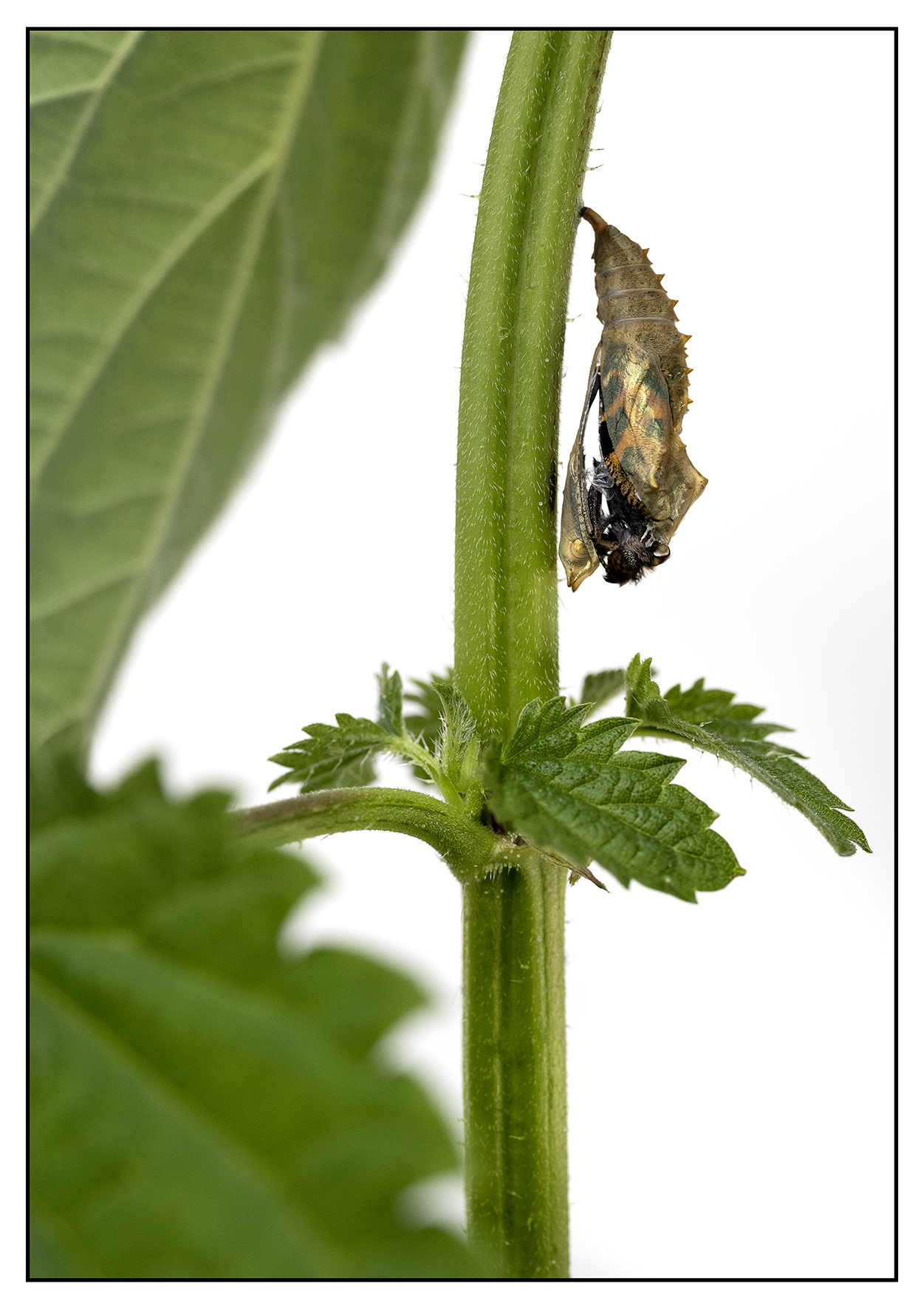
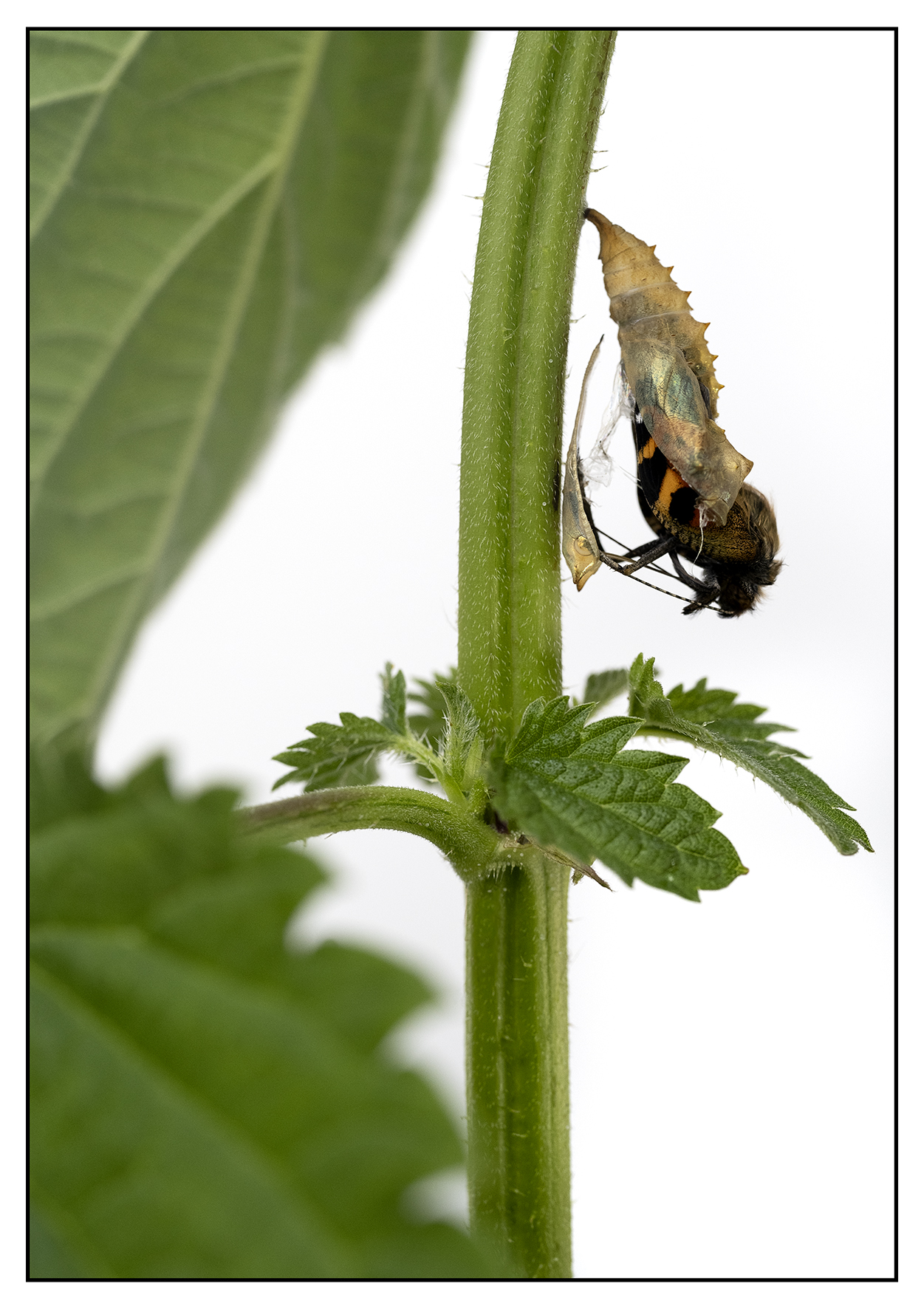
The caterpillars of moths pupate and hatch largely out of sight. They crawl into the ground or spin a cocoon around themselves within which their metamorphosis takes place. Spinning a cocoon is at least as remarkable to witness. As the cocoon progresses, the caterpillar slowly disappears from sight.
The fact that different caterpillars only eat from a limited number of plants was new to me, as was the concept of host plant (the specific plant on which a particular caterpillar lives).It also surprised the 17th century artist and ecologist avant la lettre Maria Sibylla Merian: “It is a source of wonder to me that I often had caterpillars which fed on a single flowering plant, would feed on that one alone, and soon died if I did not provide it for them.”

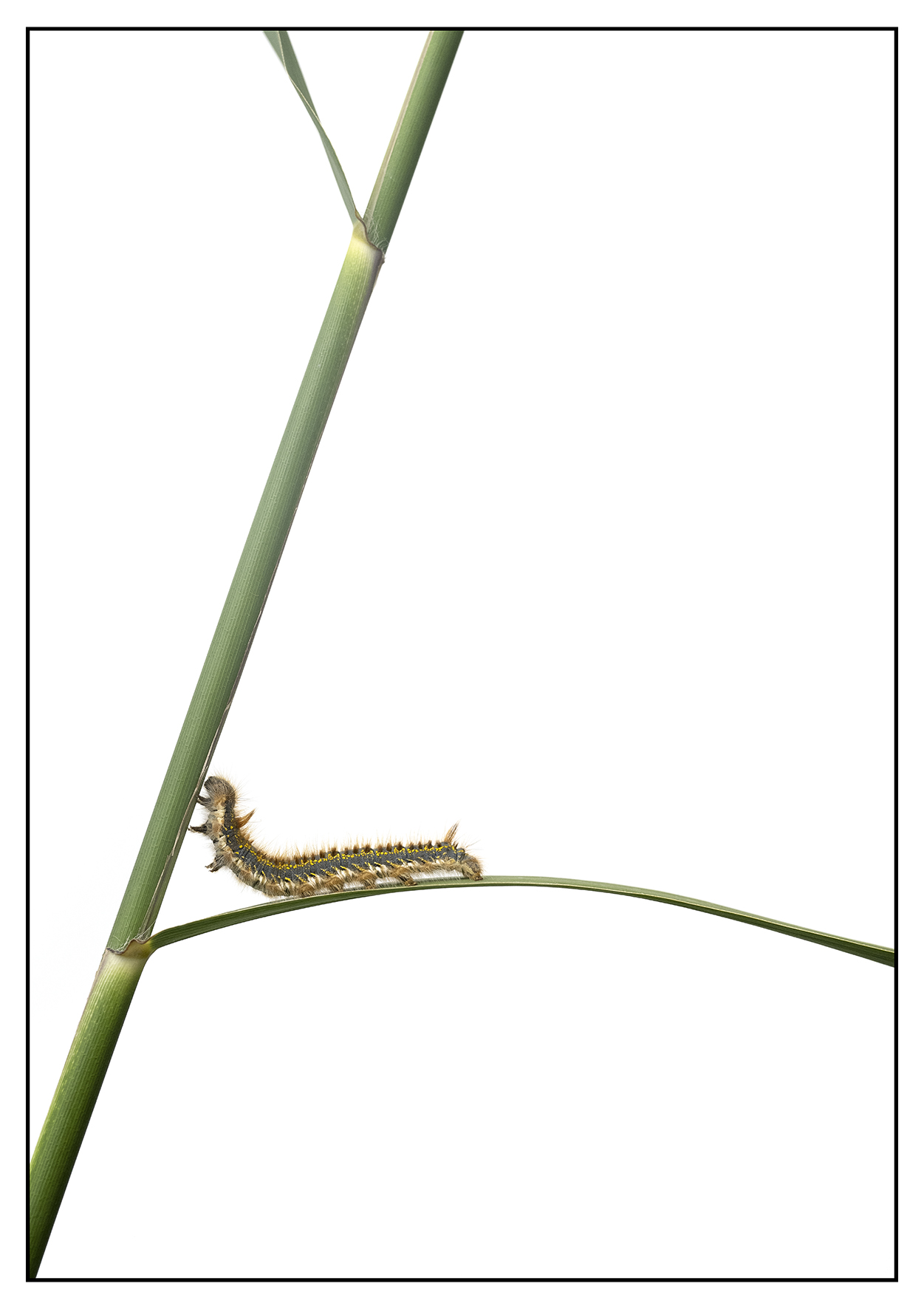
Euthrix potatoria on Reed
Shared morning routine
The Euthrix potatoria is a caterpillar which drinks dew drops in nature. This extra moisture is vital for the caterpillar. Subsequently the caterpillars became part of my morning ritual: While coffee simmered in a percolator on the stove, I took the reeds, on which these caterpillars live, out of the breeding tent onto the balcony to spray them with water. In the meantime the coffee would be ready and we drink together on the balcony; the caterpillars their water and me my coffee. We did this each morning for weeks in a row.
Observing how a Euthrix potatoria caterpillar spun a cocoon around herself was just as impressive as observing it hatch several weeks later. The day after the moths emerged from their cocoons, I returned them to nature, which was always the intended goal while breeding. They left me with several eggs, which hatched, and the cycle began once more.
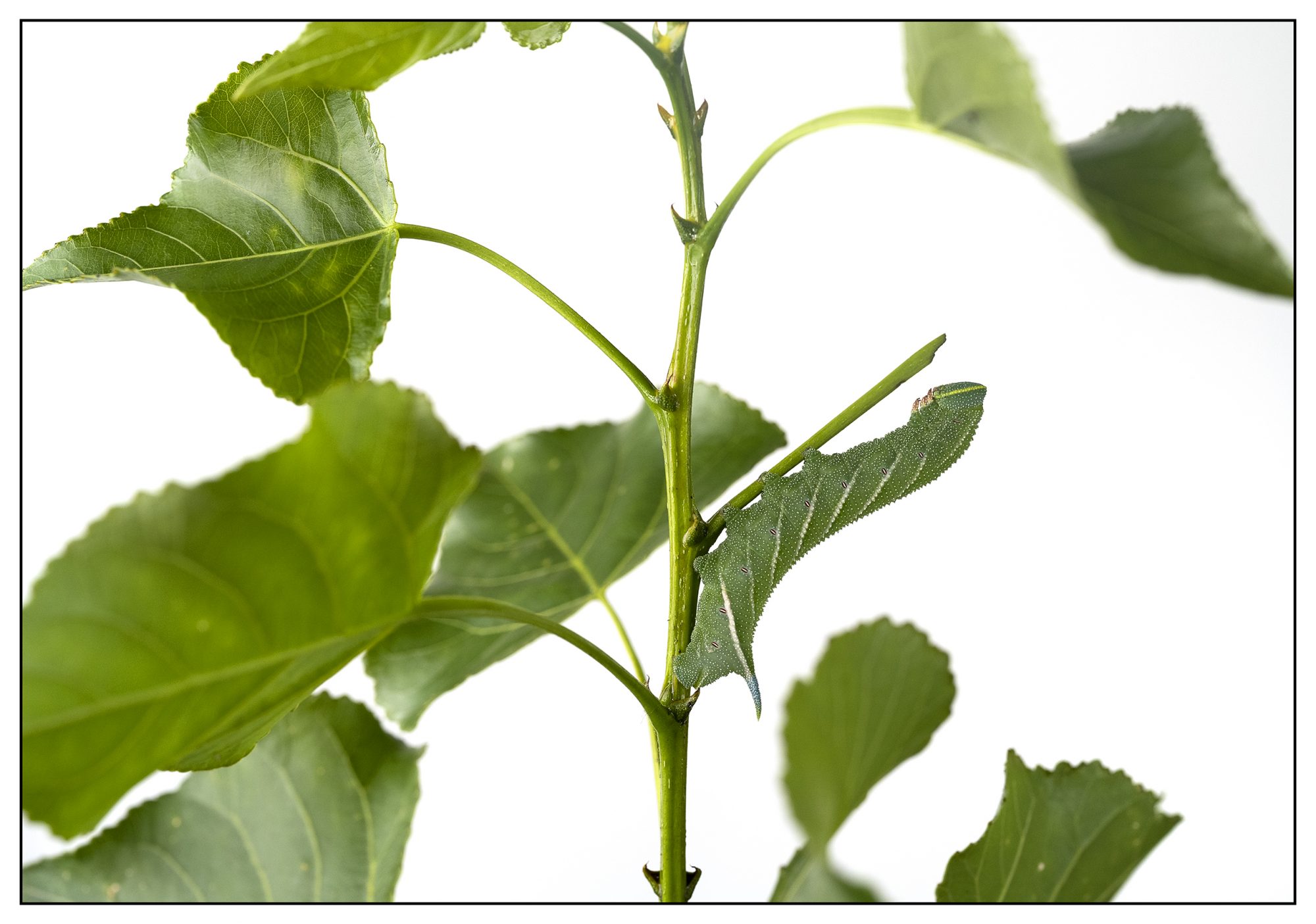
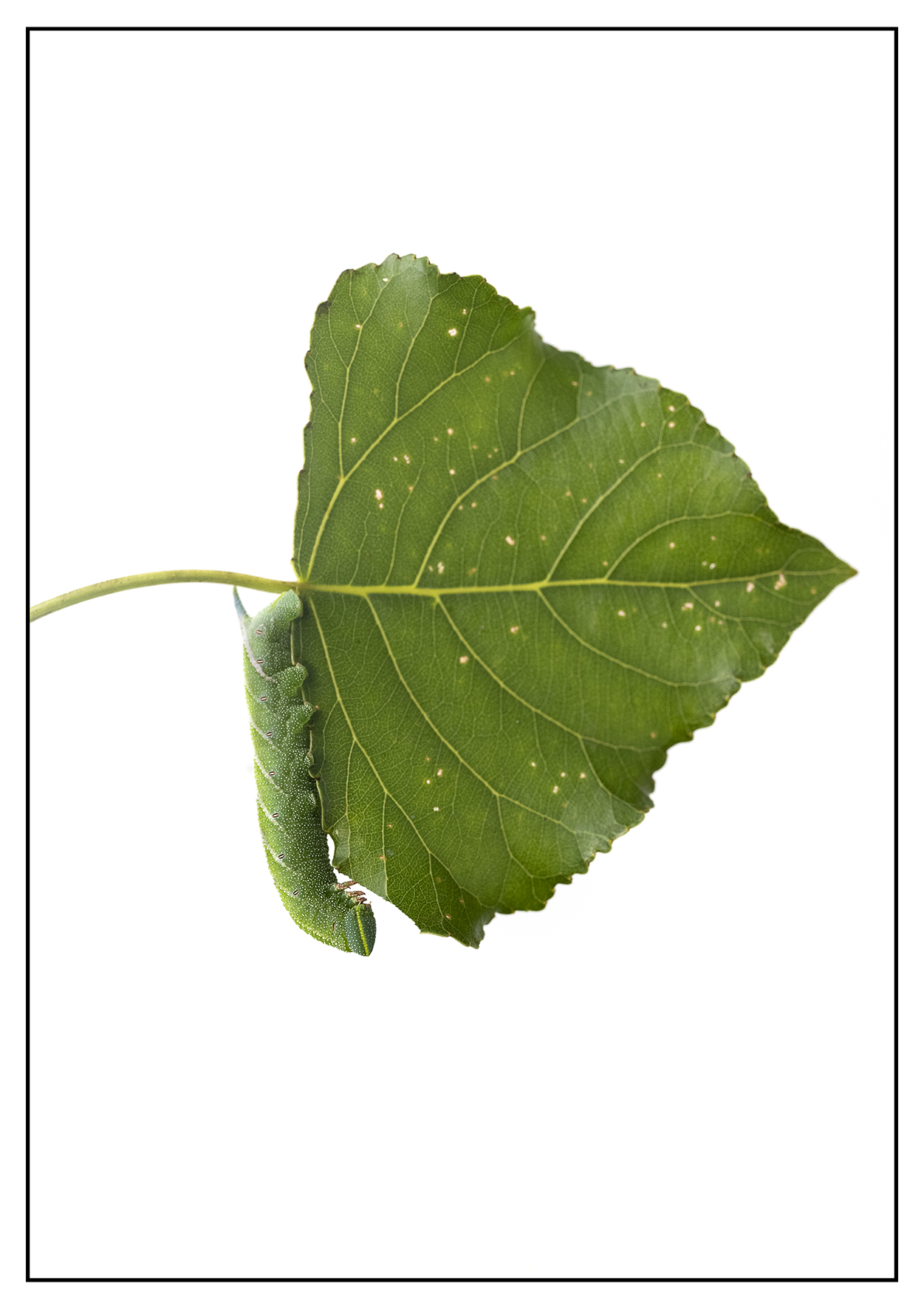
(Photo)graphic
Metamorphosis is a series of photographs in which caterpillars are shown on their specific host plants. These photos were made against a white background, a visual reference to drawings and engravings from the 17th as those of Maria Sibylla Merian. The white background, and also the bamboo paper on which the photos are printed, emphasise the graphic part of photographic.
